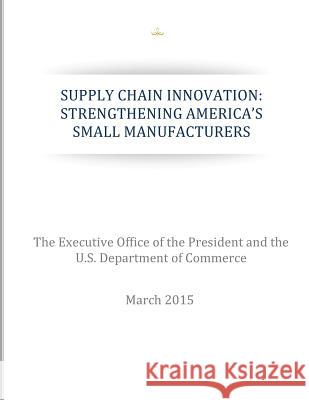Supply Chain Innovation: Strengthening America's Small Manufacturers » książka
Supply Chain Innovation: Strengthening America's Small Manufacturers
ISBN-13: 9781511542531 / Angielski / Miękka / 2015 / 24 str.
U.S. manufacturing is in the midst of a potential resurgence. Since February 2010, manufacturers have added 877,000 jobs" the sectors first sustained job growth since the 1990s. Americas 230,000 small manufacturing firms have played a key role in this resurgence, adding the majority of new manufacturing jobs every year, while forming the backbone of U.S. supply chains. Dense networks of these small manufacturers are vital to the process of taking a product from concept to market, and the exchange of manufacturing know-how across suppliers is essential for the diffusion of the new technologies and innovative processes that give U.S. manufacturing its cutting edge. However, these networks are under stress. From 2000 to 2010, manufacturing output and investment stagnated as companies offshored production previously done domestically. The U.S. supplier base weakened, raising doubts about the future of manufacturing's contribution to American innovation. Small manufacturers then and now face steep barriers to innovation - from invention, to commercialization, to the diffusion of new technology. For example, small manufacturers contribute less than one-third of all manufacturing R&D, despite making up 98 percent of manufacturing firms and as a general rule, small firms are one-seventh as likely as large firms to conduct R&D. As a result, small manufacturers are often in the positon of having to adopt technologies invented by others. Small manufacturers also face unique barriers in accessing the capital and expertise to take on the risk of new technologies. In part because of the challenges they face in adopting new technologies and processes, small manufacturers are only 60 percent as productive as large manufacturers. Strengthening America's supply chains and the small manufacturers at their core is essential to the long-term competitiveness of U.S. manufacturers both large and small. Manufacturers spend on average 60 percent of the price of their final product on purchased inputs, so differences in the quality and nimbleness of their supply chains can make or break a manufacturer's ability to compete.
Zawartość książki może nie spełniać oczekiwań – reklamacje nie obejmują treści, która mogła nie być redakcyjnie ani merytorycznie opracowana.











